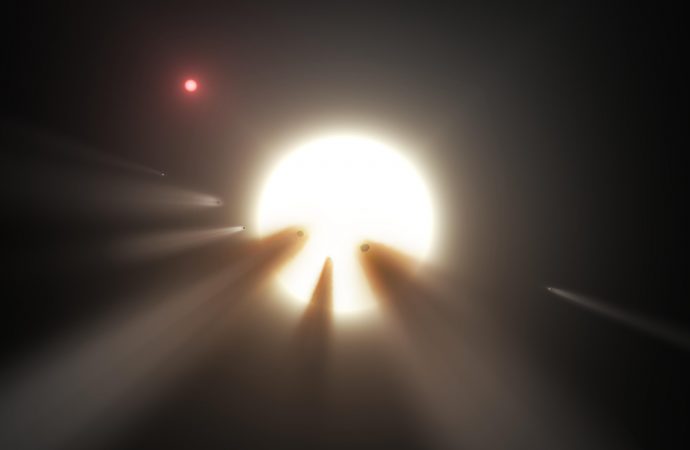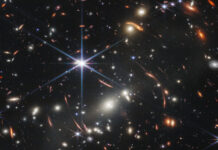The dimming patterns of KIC 8462852 still baffle observers, three years on.
Back in September 2015, Yale astronomers released that the KIC 8462852 star, that had been viewed for four years or so by the Kepler space telescope, had undergone a series of anomalous, irregular dimmings that had no identifiable explanation to them. [1]
The Mystery Deepens
Researchers at the Carnegie Institution of Washington re-examined the Kepler data and determined that it had also been steadily dimming over the course of those four years, on top of its sporadic dips in brightness. For 1,000 days, the rate of dimming observed was constant; then, for 200 days after, its dimming rate suddenly increased by some order of magnitude; finally, for the remaining 200 days, its brightness had remained largely unchanged.
Another phenomenon they noticed was that a number of other stars in the same field of view of the Kepler telescope as KIC 8462852 had also dimmed by similar rates during the first 1,000 days. [2]
What’s the Verdict?
Whatever hypotheses that can be made regarding this mysterious occurrence, it must account for the 1,000-day dimming stage of KIC 8462852 as well as nearby stars and account for the other dimming episodes this star had experienced while being observed. The current-running hypothesis is that it could possibly be due to a rocky body, or something of the like, that had survived a large collision; the dimming would then be due to the body as well as the dust and debris it was leaving behind.
Other, more ‘creative’, hypotheses include swarms of planetesimals, comets, or other rocky objects and even a Dyson Sphere (an alien object found in the Star Trek universe that is built to envelop whole stars to sap their energy).
References:
[1]Boyajian, T., LaCourse, D., Rappaport, S., & et al (2016). Planet Hunters IX. KIC 8462852 – where’s the flux? Monthly Notices of the Royal Astronomical Society, 457 (4), 3988-4004 DOI: 10.1093/mnras/stw218
[2]Montet, B., & Simon, J. (2016). KIC 8462852 faded throughout the mission The Astrophysical Journal, 830 (2) DOI: 10.3847/2041-8205/830/2/L39
Source: SciNews –Mystery of KIC 8465852 deepens





